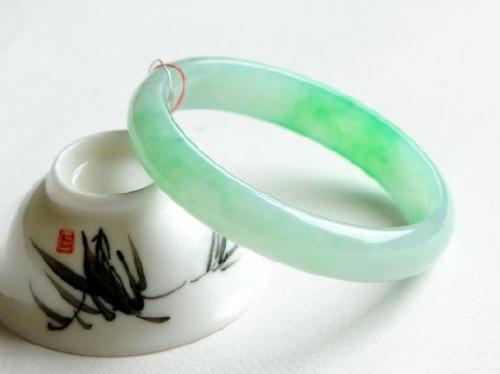The five colors of jade should be noted
 In the identification of the manufacturing age of the device, the five colors related to the jade should be noticed by Kam Yu. This is the old color, the natural color, the ink color, the dyeing, and the jade skin color produced after weathering the jade.
In the identification of the manufacturing age of the device, the five colors related to the jade should be noticed by Kam Yu. This is the old color, the natural color, the ink color, the dyeing, and the jade skin color produced after weathering the jade. Jade's oldest color, the most important thing for jades, is the influence of Other elements contained in the soil when the jade buries in the earth. It will produce a color change, which is known as the ochre color in ancient literature, and the more common one is rust. Color, copper green, dark yellow, black, white. It is often referred to as rust, copper, earthworms, mercury, and leeches. Apart from the fact that white color can make the hardness of jade vary a lot and these colors are not very popular, other jade tools with color change tend to have a higher market price than jade without color change.
Panyu is a hand or skin friction with the jade, some of the jade has a color due to the friction of the human body will produce a color change, this type of color change is known as "plate color." In general, the old jade dish will produce a sense of oldness. If there is a color on the old jade, the color will change if the hand is used for a long time. If there is no delicate luster after a long period of time, some collectors will look at the old and new of the jade when looking at the jade. In particular, the Neolithic era is generally not used as a temporary device for burial, but it is used for many years, even for several generations. Therefore, it is often used in a delicate way. The surface is delicate, and the works are very good. The fine light, this fine light, though buried and dark, can still exist, and it is under the floating color in the husk of the jade surface. This phenomenon is particularly evident in Hongshan cultural jade.
The jade color is the color of the jade material. The ancients claimed that the standard of jade color was “character†and proposed the concept of “red as chicken roe†and “yellow as green roeâ€. That is to say, in the jade materials of various colors, the above standards are the most precious. Of course, when selecting and evaluating jade materials, in addition to the depth of color, the status of its distribution should be determined, whether there is chapped, even color, and color change.
Jade skin color is the color change produced by jade in natural weathering, among which dark yellow, brownish brown and white are the most common and progressive changes in weathering. These changes are mostly found in jade materials, especially in rivers. The appearance of the pebble-like material appears on the surface, so it is called jade skin. The color of the jade skin and the color of the ochre are often not easy to distinguish. Therefore, with the jade skin color serving as the ochre color jade, generally, the weathering color should be relatively uniform. Pure, dark color is not carried out in a single situation, it is a variety of factors at the same time, so the uniformity is poor, and the type of color blemishes is not single.
Dyeing is a skill in the manufacture of jade, especially when it is used in imitation of ancient jade. Natural jade is less material and more expensive, and more material and more defective. Counterfeiters often produce fake ancient jade. There are various methods of dyeing, which can be generally divided into good jade dyeing and sub-jade dyeing. Sub-germanium dyeing can be identified and valueless. Fine jade dyeing or masking can be used to enhance the value of works. The common dyeing is burning black, fried silk amber, artificial white, rust yellow. The so-called black burn, that is, with fire or local, or the whole, jade fire after the black, burning is gray, cracks, black burn is often not easy to distinguish with the black color. The fried silk is the jade heated by the fire and then cooled down into the water, so that the jade surface cracks, in the plus color beam, the color is varied, showing a silk screen. Amber hot is an ancient method. With this method, the jade surface has an amber color that looks very good. Artificial white is the use of chemical raw materials to make the jade surface white, soft texture, and sometimes exposed jade. Rust yellow is made of rust-water soaking jade ware, making its surface have rust color. The modern method of dyeing jade is peculiar, diverse, and mostly confidential. When identifying, it is necessary to find ways to see more of the dyed jade works. First, remember to unearth. Jade color features.
Wool Scarfpolyester Scarf,Lady Scarf,Cotton Lady Scarf,Square Lady Scarf
TSA Apparel Co., Ltd. , http://www.hz-winterscarf.com